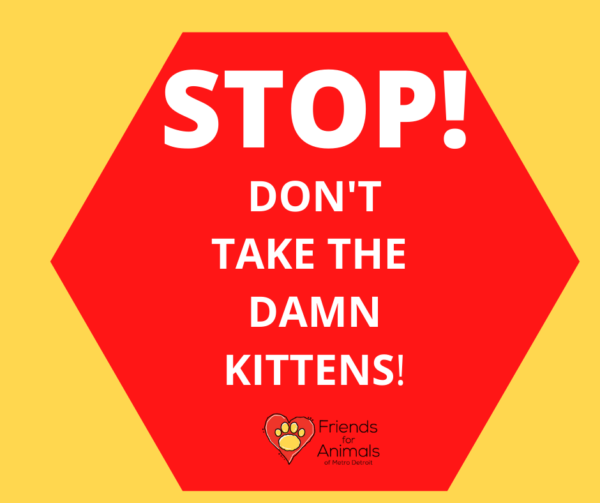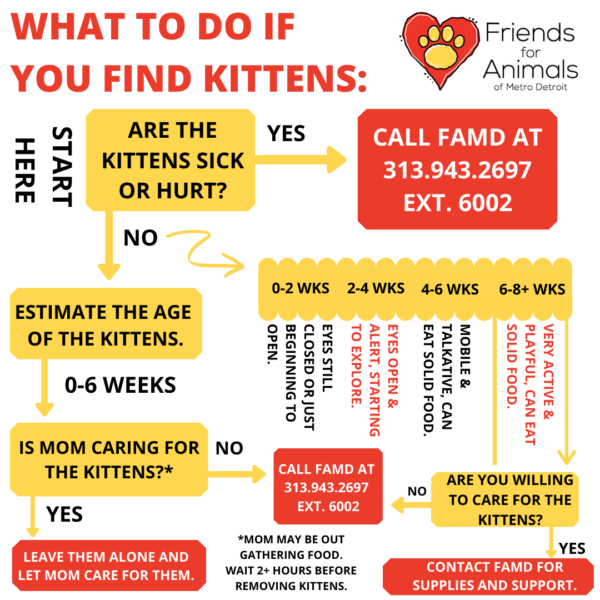
Sorry for the language, but desperate times call for desperate measures. For the majority of us, when we see kittens out in the wild, our first instinct is to want to help. While that’s absolutely fantastic, we need to make sure what we are doing is actually in the kittens’ best interest.
The truth is, in NEARLY ALL cases, kittens outdoors do not need to be “rescued.” When you “kit”-nap kittens from their mothers, the reality is, more often than not, this is a death sentence. When kittens are very young (0-6 weeks old) their best chance of survival is with their mom. No matter how great our bottle-feeding foster families are, they can never match a mother cat’s instinctual care for her babies. Kittens also receive important nutrients and antibodies from their moms, and critical socialization skills. These neonatal litters are VERY difficult to care for – they require bottle-feeding and round-the-clock care for a CHANCE to survive without their mom. Many simply “fail to thrive” once they have been taken from their mom. We’ve already had numerous kittens taken from their moms that have died this year, who most likely would have survived if they were left alone. This is absolutely heartbreaking, and emotionally taxing on our staff and foster families fighting so hard to save them.
“Ok, yeah, that’s great. But I don’t think there is a Mom… I haven’t seen her – now what do I do?” If you find kittens outside alone, don’t automatically assume they don’t have a mom. Most of the time you see kittens alone, their mother is likely close by. Leave the kittens alone, and try to figure out (from a distance of at least 35 feet, and preferably inside if at all possible) if mom is still around. Mom is likely out looking for food, is in the process of moving her kittens to another location, or just plain needs a break from the needy babies for a bit! It is not unusual for momma cats to be gone for several hours – and if you are creepin’ on her babies, you may actually be keeping her away! If the kittens appear to be content, have fur that looks healthy (full and fluffy), are not excessively fussing and have plump, full bellies, there’s a very good chance mom is coming back – these kittens do not need your help! If they are in danger due to their location, you can move them to a safe spot nearby so that mom can easily find them when she returns.
If after 12-18 hours there is no evidence of a mom; the kittens are dirty, appear sick, underweight or dehydrated, contact us at 313-943-2697 ext. 6002 and we can help you determine if the kittens are at risk and you should intervene.

If you’re carrying out TNR in the winter, keep this in mind: If it’s too cold outside for you, then it’s probably too cold for cats to be in traps, exposed to the elements, for extended periods of time. Keep traps covered and secured in a temperature-controlled vehicle or building.